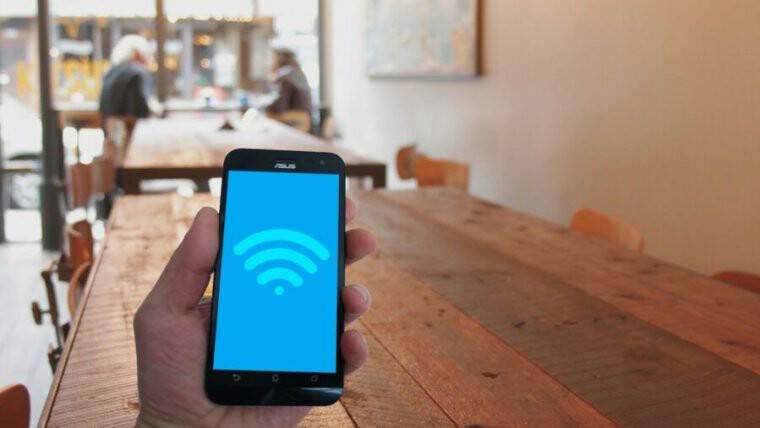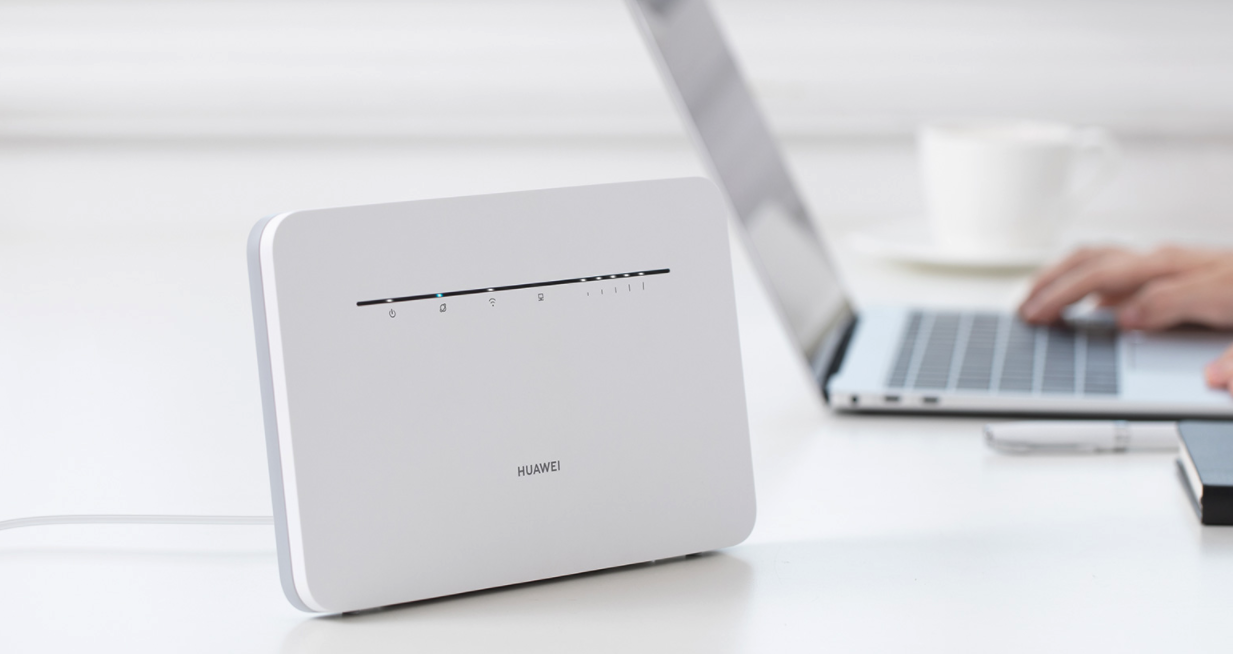
We will explain the options you have to connect to a portable WiFi so that you can have your network without having to resort to unsafe public WiFi. And even when there is no WiFi around and no possibility, these methods will help you to have a way to connect.
We will focus on the two most affordable methods, although we will also discuss one more. Of course, you must remember that everyone goes through using 4G or 5G networks as an alternative to connect, either using the connection you already have on your mobile or contracting another.
Previous tips
Before you start choosing your preferred method of using portable Internet when traveling, there are two things to remember. The first of these is your destination and the type of contract you have. And the second is to be aware of your needs.
Suppose you are going to travel through Spain or the European Union. In that case, you should know that your operator will offer you roaming at no additional cost, which means you can make calls and use the Internet at no additional cost. You will have the same limits and prices as in Spain, although you must have roaming activated on your mobile to navigate normally.
If you travel outside the European Union, things change since they do not usually offer free roaming outside community territory. Here, you will be able to act in three different ways depending on how long your trip is
First of all, you can use your usual SIM. The operators usually establish special rates for territories outside the EU; conveniently, you inform yourself about them. You must also make sure that you will have coverage in your destination country, so to find out about both things, it is advisable to contact the operator. This is recommended for short trips.
If the trip is long, there are two things you can do. You can buy a prepaid SIM in the destination where you are, although the prices will vary depending on the country, or buy an international SIM with several alternatives at different prices.
Regarding the rate, there is another thing you should consider. You must ensure you have the necessary gigabytes, whether you opt for tethering with your mobile or using a 4G or 5G router. In both cases, you will need a SIM card, and you need to have enough data for the use that you will give both to the mobile and to the other devices with which you will connect.
If it is not a sufficient rate, you can think about temporarily changing the rate with the same operator or, if it allows, contracting an extra data bonus to cover your needs during the trip.
And beyond the rates, it is also important to know how you will need to use the Internet on your trip. For example, if you need to connect on the move, whether on a train or bus, the needs are different than if you want Internet in a second residence without contracting fiber.
Turn your mobile into a router.

We will start with the easiest method, creating an access point with your mobile to share the connection with other devices. With it, you will turn your mobile into a WiFi router that generates a signal to which you can connect with your other devices wirelessly.
The positive part of this method is that you will not need to contract any service or buy any device to connect to the Internet. Both Android and iOS have implemented this system in the phone settings to be able to create the access points, choose their names, and set the password that you want to use for this WiFi that you are going to create.
In addition, you should remember that when we go on a trip, we can forget many things, but we will rarely forget our mobile. Therefore, you do not need to carry anything else in your luggage either since you only need your mobile phone to configure your WiFi. Then, you just have to connect to that access point from another device as if connecting to a WiFi network.
The negative part of this method is that you will spend the data from your mobile rate, so everything you browse with the device you connect to the access point will be as if you were browsing with your mobile. This means that you should be careful with the pages you enter and with what you do since, for example, downloading things could quickly liquidate your data rate.
To consider
If you opt for this option, you should consider some things. First of all, you have to make sure that your mobile data rate has enough gigabytes to take on the online work you will have to do.
Today, with most rates, you will not have problems if what you want to do is surf the Internet. But if you need to download files or share some that are especially heavy, always keep an eye on the data you have left on your mobile to avoid disappointment.
And, of course, creating a good password when you generate your access point is vitally important. You have to create a strong password because the WiFi you have created can be detected by all the devices around you, which means that if your password is weak, they can access your network.
Configure the access point on your Android
To activate your access point on Android, you have to enter the Internet Sharing option in the Network and Internet section of your device’s settings, or depending on the manufacturer, look for an option within the network options that serve to share the connection.
Here, on the Internet Sharing screen, you can customize your hotspot name and password, making sure to use a secure one. And once you have everything configured as you want, simply activate the Use Internet Sharing option, or the one used for this purpose by the manufacturer of your mobile, because, in Android, the names of the configuration options can change between manufacturers.
Set up a hotspot on your iPhone
The process is even easier on the iPhone since you only have to click on the Personal Access point section at the beginning of the settings menu. You cannot change the name of this access point, but you can set its password.
Then, you only have to activate the option Allow others to connect and that’s it; you will have the active access point. Then, you just have to look for it in the list of WiFi networks with the other device, which will have the name of your iPhone, and you will connect as if it were another WiFi network.
You can also share connections by USB or Bluetooth
There are two other methods by which you can also share your connection. In this case, you are not going to share the network by creating a WiFi, which is what we are doing in the article today, but you will be able to connect one device to another directly; the one you have a connection to will act as a router, and the one you connect to it you can get your data directly.
This connection can be wireless or wired. On the one hand, you can configure your device so that others can connect to it via Bluetooth and use its data. With this method, with the device where you want to have Internet, you will have to go to the options to connect via Bluetooth to another, and when you do, in the main one, you will be asked to confirm the connection somehow.
The other method is to connect both devices via USB. For this, you will need a cable that has on one end the type of USB used by one of the devices and on the other the type used by the other. Sometimes this can be simple, but it is still another cable that you must take with you, and for this reason, the easiest thing to do is usually to create your WiFi.
Use portable routers

A portable router is an alternative to sharing a network with your mobile. They can be 4G or 5G routers, generating WiFi networks through your data rate. It comes to be something very similar to what we have explained to you with the mobile, but done with a specific device. You put the SIM card with the data on it, and it will generate the connection.
The advantage of these routers is that they are usually small, and you can always take them with you, and their main distinction from sharing the mobile connection is that they do not depend on a device; they are independent routers, something that in some contexts can be interesting.
In the first place, because it will not suppose an extra battery cost for the mobile. But secondly, it is somewhat more comfortable in an apartment or hotel room since you can leave the router on a table or a specific place and leave the mobile completely free.
Just like your mobile, it works with a SIM card. Still, being an independent device, it leaves you room so you can hire a specific rate for the router and have a specific SIM for it so that what you browse does not affect the data of your mobile or cause you problems later when using the smartphone at the end of the month.
Another advantage of these devices is that many models have different form factors. Some models are a dongle, a USB stick that you connect to the laptop on duty so that it draws power from it and generates WiFi, while others are plug-in so that you can leave them in a vacation apartment or apartment. A rechargeable battery powers some wireless models.
In any of the cases, one of the best ways to get the most out of these routers is to contract a separate rate, which has its SIM with its data. To do this, you will have to look for a rate with unlimited data or with a good amount of data, although you can pay less attention to calls, or you can even hire a prepaid card with only the data you need.
To take into account choosing one
As we have told you, 4G and 5G routers are generally of three types: dongles that are powered by a connected device, those that have the shape of a traditional router but are smaller that connect to the electrical network, and those that integrate an internal battery.
Therefore, the first thing you should do is decide which of the three formats you need, since depending on the use you want to give it, one may be better than the other. The one plugged into the current is perfect for second homes, the battery one for your trips with devices that you don’t usually leave fixed in one place, and the one that takes the current from a laptop is useful for this type of computer.
If you take a router with a battery, you have to pay attention to the autonomy, which is sufficient for the hours you will use it. Being routers intended for mobility, you will also be interested in being compact and light, especially if it is something you will always carry with you, and in these cases, it is also important that its casing is resistant to shocks and falls.
Finally, it is also important to look at what type of networks it is compatible with since speeds and latencies vary greatly between 4G and 4G+. If you can take a 5G one, then speed will never be a problem, although you may not need it either. Both in most cases. This also depends on your budget and how future-proof you want it to be.
You can also use an old smartphone.
There is a third path you can explore: a meeting point between the two previous alternatives. Using an old mobile as a router to create an access point with it to connect to other devices. We are not referring to an old Nokia but to a smartphone.
Here, the positive part is that you do not need to spend money on another device, just recycle an old one, and at the same time, you will free up your main mobile and not spend so much battery on it. In addition, mobile will always be relatively small and easy to use.
However, the negative part is that being old, the connection speed it offers is not as good as that of a more modern mobile, or that it does not manage multiple connections as well as a specific router to create WiFi from a card SIM. Another negative aspect may be the wear and tear that this mobile may already have on the battery, which may not offer as many autonomy times for your WiFi network.

Sharlene Meriel is an avid gamer with a knack for technology. He has been writing about the latest technologies for the past 5 years. His contribution in technology journalism has been noteworthy. He is also a day trader with interest in the Forex market.










